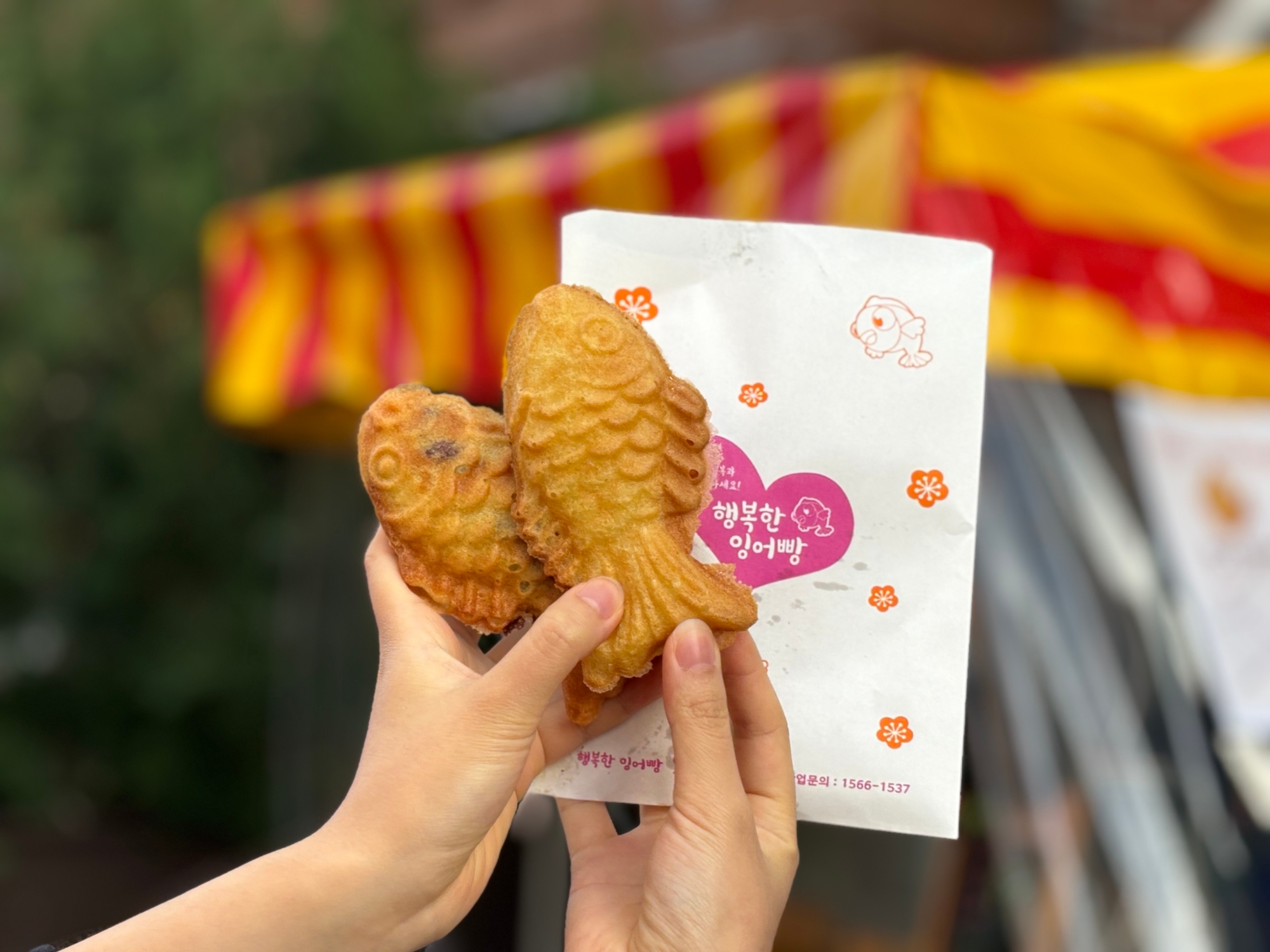

As winter break approaches, more and more SeoulTech students are thinking about how to spend their time in Korea. Although Korea has severe winter weather, that doesn't mean you have to stay indoors. The SeoulTech provides ways to thoroughly enjoy the winter in Korea.
Taste the Winter Flavors of Korea
To endure the harsh winter, Korea offers a variety of seasonal snacks, such as hotteok (pancakes filled with cinnamon sugar), gunbam (roasted chestnuts), and gungoguma (roasted sweet potatoes). However, among Korea's classic winter snacks, the most iconic is undoubtedly bungeo-ppang. This fish-shaped bun is made with flour dough and filled with sweet red bean paste. Cooked in a fish-shaped iron mold, bungeo-ppang is crispy outside and tender inside, giving it a unique and complex texture. The variety of fillings, ranging from traditional red bean paste to custard cream, pizza, and chocolate, adds to the richness of the experience. While the range of fillings are ever-growing, red bean paste and custard cream remain the most popular choices, sparking a friendly rivalry among fans—just one of numerous bungeo-ppang debates, with another being over whether the head, trunk, or tail is the best part.
Bungeo-ppang is widely sold at pojangmacha (tented outdoor food stalls) with some spots especially well-known, such as "Namyeong Station Red Bean Fish Bread." This winter, instead of a hand warmer, try holding a bungeo-ppang—it will not only bring warmth to your hands but also your heart.
Experience Korean Seasonal Customs
Korea has various seasonal customs, which are traditional practices observed on specific dates throughout the year. Many of these rites and rituals are still observed today, and the winter season is no exception. Dongji and Seol are the most prominent among the various seasonal customs these days.
Dongji, the winter solstice, is one of 24 subdivisions of the seasons. It usually falls around December 22 or 23 of the solar calendar, and this year, Dongji will be December 21. As it marks the shortest day and the longest night in the year, Koreans traditionally eat patjuk, a red bean porridge known for staving off evil spirits and bringing good fortune. Most juk restaurants serve patjuk, so why not enjoy a bowl and wish for good luck on Dongji?
Seol, the Lunar New Year's Day, is one of the two biggest holidays in Korea. On Seol, families gather and hold rituals such as charye and sebae. Charye is a memorial rite held early in the morning of Seol. Sebae is the custom of bowing to elder family members during Seol as a gesture of respect. In return, elders offer sebaetdon—money given along with words of blessing. Families also share heartwarming tteokguk, a sliced rice cake soup. Eating tteokguk on Seol is especially exciting for children looking forward to adulthood because it symbolizes gaining a year in age.
For those who want to experience these seasonal customs, the National Folk Museum of Korea hosts special festivals, and more information is available on its website.
Visit Captivating Winter Places
If you want to get away from campus and see breathtaking winter scenery, Deogyu Mountain in Muju is the perfect destination.
Even though, Deogyu Mountain is the fourth highest mountain in Korea, a gondola lift allows visitors who don't want to hike for a long time to reach the top easily. Moreover, the surrounding national park and ski resort offer various activities. From January to early February, the mountain transforms into a snow-capped wonderland.
For those seeking other activities closer to campus, Taereung International Ice Rink and Kwangwoon University Ice Rink are great places to enjoy winter sports. Both places provide ice skate lessons and equipment rental systems. Additionally, with both being indoor rinks, they are open regardless of weather conditions.
Reporter,
Kyungmin Shin km.pa22@seoultech.ac.kr


 Comment 0
Comment 0 Posts containing profanity or personal attacks will be deleted
Posts containing profanity or personal attacks will be deleted